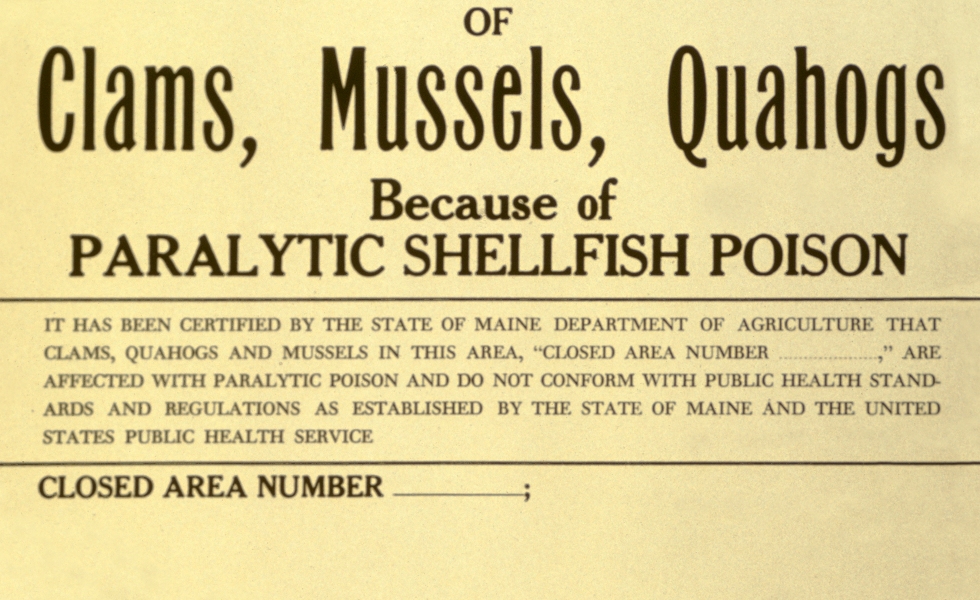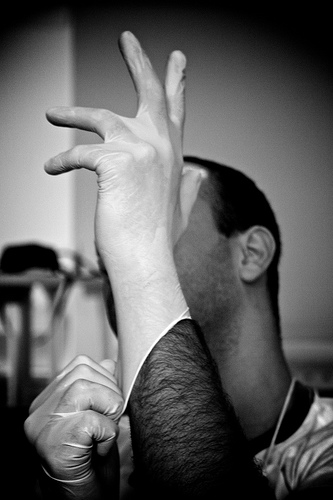The Perfect Disease Surveillance System

How is it that we get to know about diseases like Zika or Ebola? Is it just dumb luck that we encounter patients and then go from there? In a way, yes. These diseases, especially novel ones, have a way of just popping onto the radar without warning. Then we respond vigorously because we weren’t able to do something about the first few cases before the whole thing got out of control.
But what about other diseases?
In the United States, there is a “network of networks” that is constantly taking in information from many different sources. Epidemiologists and data analysis look at those data and find trends or aberrations that need to be dealt with. They then pass on that information to those who need to do something about it… Or they do it themselves.
For the most part, this system works pretty well. When two or three people presented to a hospital in Maryland with diarrhea and dehydration, the physicians there collected stool specimens. The labs then grew the pathogenic (bad) bacteria from the specimens and figured out the genetic “fingerprint” of the bacteria. That fingerprint was uploaded to a system that compared the fingerprint for matches. When the cases were matched to each other, the epidemiologists running that bacterial fingerprint database notified state and local public health officials. Interviews of the cases were conducted, and it was determined that they all consumed unpasteurized apple cider from the same source. A recall was done to prevent further cases, and I ended up at the orchard to collect samples and interview workers.

This interview won’t hurt a bit. Promise.
This process is repeated day after day here (and in other countries around the world) and not just for foodborne diseases. There are networks looking at trends in influenza disease patterns in order to predict the seasonal peaks and troughs and to guide the immunization campaigns. There are networks run by military and law enforcement units looking for unusual occurrences of diseases. (Like someone showing up to the hospital with Vaccinia infection although they never had the smallpox vaccine. That could be an indicator of someone using the vaccine in a clandestine way.) And there are networks that track chronic disease as well in order to evaluate interventions and predict future needs.
However, none of these systems are perfect. As I told you at the beginning, these systems are subject to many different factors, and they tend to fail to recognize early phases of explosive or novel diseases. Heck, the E. coli outbreak from the unpasteurized cider would not have been detected for days had the physicians not decided to take stool specimens from the initial cases. If they would have treated the “isolated” cases are just regular diarrhea that people get all the time, it would have taken a higher number of concentrated cases to really get things going. With very infectious things (from person-to-person) like Ebola, you can see where not catching the first few cases leads to some problems.

Had someone reported this, we could have avoided a pandemic!
So what is the perfect surveillance system?
The Centers for Disease Control and Prevention (CDC) have a set of guidelines for the evaluation of disease surveillance systems. From those guidelines, the best surveillance systems are:
- Simple: They are not complicated “network of networks” with many points of imput and analysis. In essence, you have one way of detecting diseases, one set of data points, and one person (or one cohesive group) doing the analysis and notification.
- Flexible: They can adapt. If a disease takes a turn for the worse all of a sudden, or it presents itself in a whole new way, the system adapts and continues tracking without missing a beat.
- Have good data quality: Like with simplicity, the data are organized and easy to collect and easy to understand. There are no complicated measurements that require multiple devices (e.g. surveys or lab tests) to differentiate between a case and a not-a-case. The data are clean and without gaps.
- Acceptable: Everyone taking part in the surveillance system, including the people under surveillance, are okay with the way the system works. Physicians have no trouble filling out the forms for all the patients they see with a particular syndrome, patients don’t have a problem in submitting information or specimens, and laboratories have no problem in submitting lab results to the surveillance system. Furthermore, policymakers are okay with the system and promote and fund it as necessary for it to work as intended.
- Sensitive: The system detects as many cases as possible.
- Good predictive value positive: Of all the cases detected, a big proportion of them are true cases. The smallest proportion possible are false positive cases.
- Representative: The system covers a good, representative area and segments of the population, and thus describes what is going on as good as possible. There are no gaps in its coverage and no populations go underserved by the system.
- Timely: Cases are detected as early as possible to be able to do something about them. Also, the reports don’t sit around waiting to be analyzed for a long time. Something gets done ASAP.
- Stable: The system has no gaps in when it is up and running. There are no tendencies for it to “go dark” because of technical or manpower issues. It is fully funded as long as needed, or even in perpetuity. Data from the system is always available for analysis and re-analysis.
These are the guidelines I used to evaluate surveillance systems in Barranquilla, Colombia. For the most part, the systems there work well. Some work even better than the systems here in the States. While here we had to wait for lab confirmation of the E. coli and comparing it to other specimens, an outbreak of diarrheal disease associated with cheese was quickly brought under control in Barranquilla based on reports to a telephone number from citizens.
In fact, that telephone number used to be manned by mental health nurses who would take reports of suicide attempts (or suicidal ideations) and respond appropriately. Little by little, people starting calling for other situations, so public health took over and installed public health workers (mostly nurses) on the phones to take calls from concerned citizens. Everything from possibly rabid dogs to spoiled food being sold in public was reported. A number of people reported “bad tasting” cheese on the same day. An investigator was sent out to check out the cheese being sold, and it was determined that the cheese was spoiled. As much of the cheese was collected and destroyed. It wasn’t until a few days later that people who got sick from eating it started to be reported by physicians and laboratories. In that case, the system was very timely, very sensitive, and very acceptable.
So what is the perfect surveillance system, then? I keep not getting there because I really don’t think that there is such a thing. In fact, some of the guidelines balance each other out and make some measures less likely to be attained if others are fully attainable. For example, if a system is very sensitive, the system will capture a huge number of false positive cases, diminishing the predictive positive value of the system. If a system is very acceptable and just about everyone decided to participate in it, they might collapse the system, ruining its stability. (Unless it is very flexible, then it will be stable.) Same thing if the system is highly representative. It might just be impossible to reach every population in a geographical area without collapsing the system, even for a time. Or people might not want to participate (acceptability) if they know that others are being served. (You see this in some systems where one group is bellicose toward another group, so they use participation in these systems as collaboration with their enemies.)
I guess that the perfect system would involve all of us wearing a device that is permanently connected to a central database and is always reporting our health status to that database. And I do mean always, non-stop. And if that device was so fine tuned that it could tell the difference between a cold and the flu? That would be awesome. But I envision such as system as not being very acceptable by a large swath of the population because of privacy concerns. I also see it as being very expensive. The data storage alone would be phenomenal.
Then again, I think we’re getting closer to that. Not ten years ago, the idea of wearable technology that keeps track of our health status was still a dream. Today, I see tons of people wearing FitBit, Apple Watch, or Garmin watches. And a lot of those people are not working out or otherwise engaged in some activity. Almost all of us have phones, too, and those phones have accelerometers, GPS chips and barometers. Throw a thermometer in there to detect if we have a fever, and some blood-glucometer-like dongle to test our blood (or some other specimen) for disease… If that happens, all we’d have to overcome is the privacy concerns.
Trust me. Some people have already overcome their privacy concerns. (Image via Sticky Comics.)
Judging by what some people on social media are willing to share, we might not be too far off. We’d just have to work on the data storage, data analysis, and information distribution side. I think we’re getting there. I think we’ll get there. Maybe this will happen in my lifetime. Maybe soon thereafter.
In the meantime, don’t drink unpasteurized anything, unless you’re comfortable getting so sick that it doesn’t matter to you if you have to collect some watery poop for us to know all about you.
I’ve enjoyed unpasteurized drinks, but they were prepared by myself, for myself and immediately consumed. 🙂
If it’s commercially acquired, unpasteurized is not going to happen, it has to be pasteurized. Period, end of story. Otherwise, it’s not stable enough for my safety preferences at all.
Raw milk is totally off of my menu! Raw cider as well, save if I prepare it myself and immediately consume it.
When I can get them, I even like my eggs pasteurized (it’s a modified process that sanitizes the shell). In the Middle East, eggs were so processed and each and every egg had a stamp with its expiration date stamped right onto the shell. Would, that we could have that here!
LikeLike
Just curious, are pharmacists included in surveillance? I have a primary immune deficiency and don’t get out a lot during cold and flu season. So far, when asked, my local pharmacists and pharm techs have been great about letting me know when we start getting an increase in influenza-like illness. They take notice when there’s an increase in really sick patients coming in with antiviral scripts.
LikeLike
Good question. Pharmacies participate usually in an automated manner, where health departments can look into pharmacy inventories and see what has been sold. For example, they can see if there is a sudden increase in cold/flu medication sales. Unfortunately, participation is not widespread, nor is it mandatory. Can you imagine if we in public health could see all that information flowing from what people are buying medication for? As for influenza-like illness activity awareness, CDC and state/local health departments conduct their own surveillance and (if they’re good at it) report the activity via different means. There is also a neat program called “Flu Near You”, where people report influenza-like illness symptoms week after week, and you get a good picture of what is going on around you with respect to flu-like illness. You should check it out.
LikeLike
Alas, flu near me is about as accurate as flue near me, but blocked.
“Flu like illness” is pretty much, anything, ranging from a blocked flue (we had a chimney that had bricks collapse within it and we had “flu like illness” all winter, until I discovered the blocked chimney, in late spring, while installing a dish.
We’ve had “flu like illness” with what was likely subclinical West Nile Virus and currently, various other encephalitis virii and I currently have a month old lesion on my right calf that’s likely a spider bite. It matches known spider bites, it appeared when I awakened from sleep and itches intermittently, initially and occasionally since. Doctor was confused (primary), who then prescribed an antibiotic ointment, but he’s not dealt with such things on a regular basis. I have.
It’s not brown recluse, not hobo spider, but something a lot less harmful to we large mammals.
But, “flu like illness” reported in a vacuum is essentially worthless, as we’ve had such symptoms after mosquito bites in new regions
Indeed, I was somewhat unique, I never suffered from “Qatar flu”, flu like symptoms to those new to living in Qatar, but whatever it was, wasn’t influenza.
Reporting such only introduces noise to signal.
LikeLike